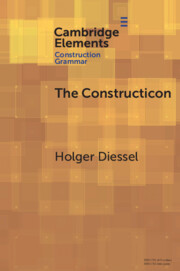Element contents
The Constructicon
Published online by Cambridge University Press: 20 May 2023
Summary
- Type
- Element
- Information
- Series: Elements in Construction GrammarOnline ISBN: 9781009327848Publisher: Cambridge University PressPrint publication: 22 June 2023
References
- 9
- Cited by



